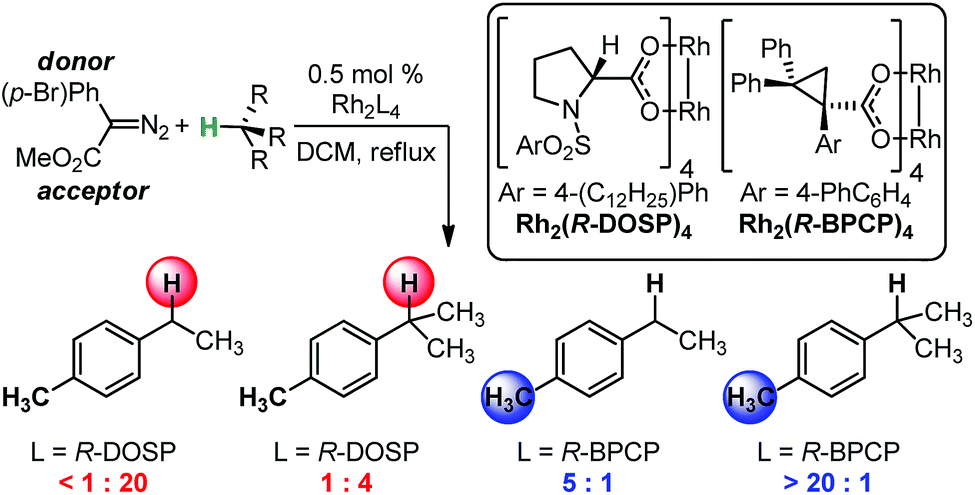Using IR vibrations to quantitatively describe and predict site-selectivity in multivariate Rh-catalyzed C–H functionalization
E. N. Bess, D. M. Guptill, H. M. L. Davies and M. S. Sigman
Chemical Science,
2015, 6, 3057-3062; 10.1039/C5SC00357A

03/2015
This collaborative project brings together the Davies and Sigman groups to construct a detailed quantitative picture describing the factors that impact selectivity in rhodium-catalyzed donor/acceptor carbene C–H Functionalization.
It had previously been shown that the using the two different chiral catalysts Rh2(DOSP)4 and Rh2(BPCP)4 high levels of 2o : 1o site-selectivity in the C¬H insertion of toluene derivatives, ranging from 20:1 to 1:610.
Through a systematic analysis of the reagent and substrate features that alter the levels of selecting between secondary (or tertiary)-to-primary benzylic C–H bonds, a description of the factors, based upon infrared vibrations and point charges, was developed. This mathematical model allowed the identification of that determine the level of site-selectivity and can be applied as predictive factors for the development of new reaction systems.